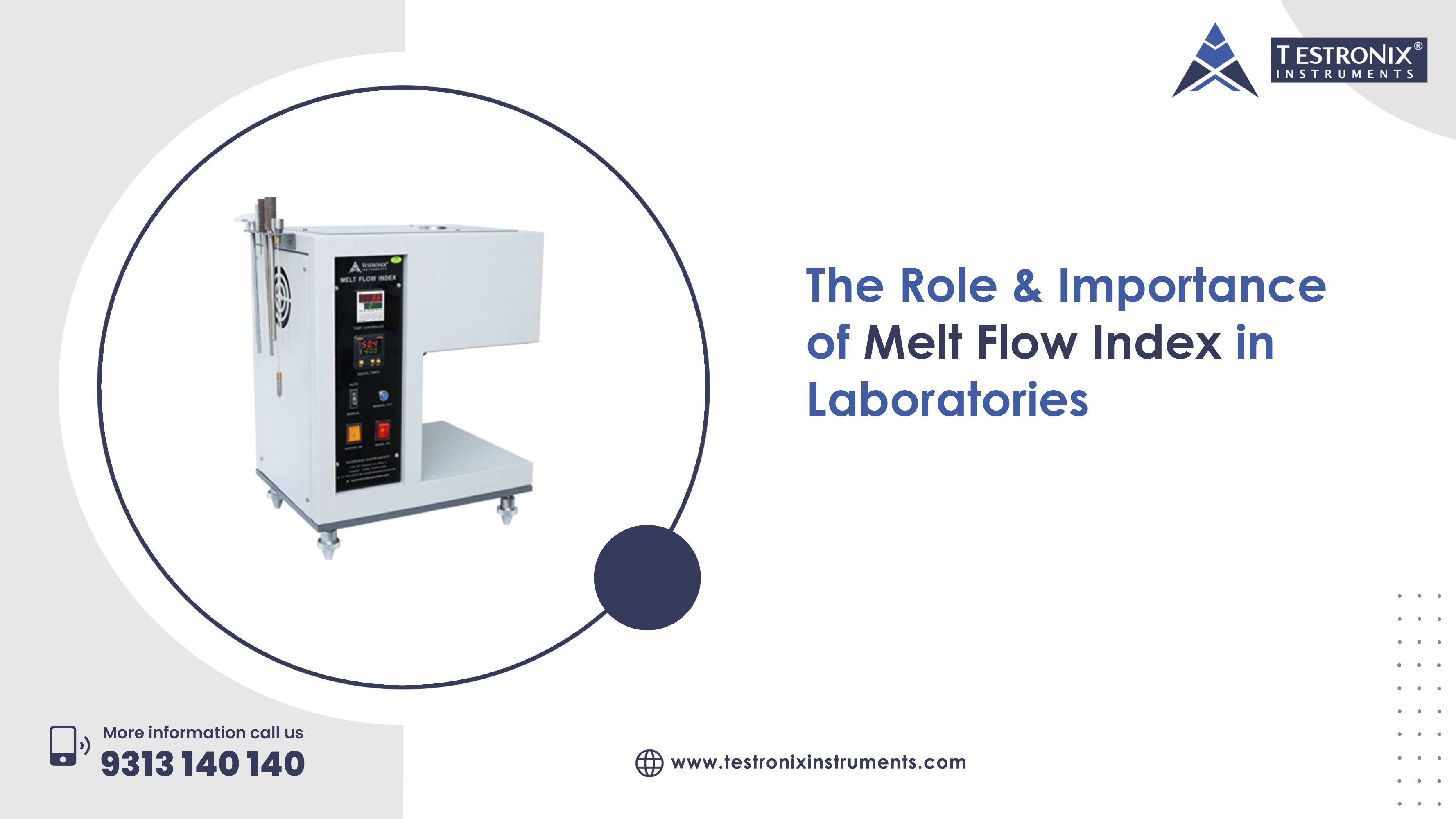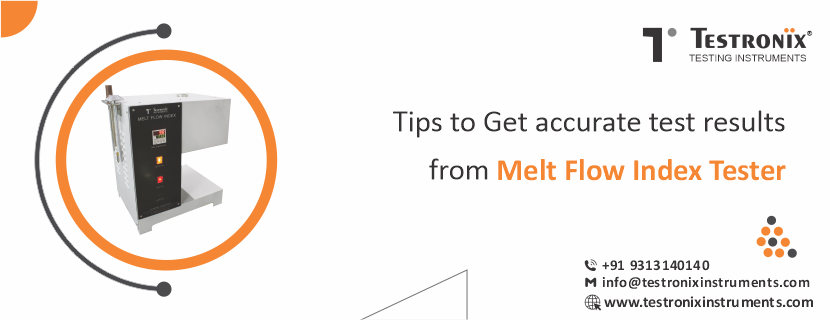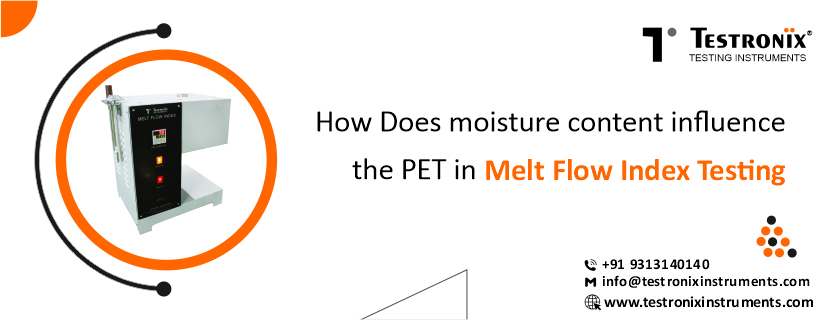In the modern plastics and polymer industry, maintaining material consistency and process efficiency is essential to meeting quality standards and staying competitive. One of the most important indicators of a polymer’s behavior during processing is the Melt Flow Index (MFI). This simple yet powerful measurement helps manufacturers evaluate how easily a material will flow when melted, making it a key factor in selecting and controlling raw materials for production.
What is Melt Flow Index?
The Melt Flow Index (MFI) is a qualitative method used to gauge how easily a thermoplastic polymer will flow when melted with specified conditions of temperature and applied pressure. MFI is expressed in grams per 10 minutes of medium, and represents the weight of free-flowing polymer material that passes through a narrow opening in a determined time period.
The principle of "higher MFI indicates easier flow" (lower viscosity), and vice versa. This information is important for determining processability in the material, consistency of products in the environments in which they will perform, and selection of proper materials for applications including packaging, auto parts, electrical component manufacturing, etc.
How is Melt Flow Index Measured?
The Melt Flow Index is measured using a specific apparatus known as a Melt Flow Indexer. In this procedure, a sample of thermoplastic is inserted into the indexer-heated barrel. When the material reaches its required temperature, a standardized weight is lowered onto the material to force the molten polymer through the die, which has a narrow capillary opening.
The amount of material that flows out during the 10 minutes is collected and weighed. This measurement, measured in grams per 10 minutes, is labeled the MFI of the polymer. The MFI will provide a quick and reliable method for evaluating and comparing different grades of polymer for potential utility in processes, such as injection molding, extrusion, and blow molding.
The following are the steps followed to measure the melt flow index or MFI:

1. Setup: Turn on the melt flow index testing machine and set the proper test temperature for the specific material. Allow the machine to stabilize at the correct temperature until the machine is fully heated.
2. Preparation of Sample: Use the needed amount of polymer sample. Ensure the sample is dry so that it does not affect the test.
3. Preparation of Load: When suitable, load the polymer sample into the heated barrel. Use a funnel or loading tool to minimize spillage.
4. Fill the Piston and Allow Preheat Time: Load the piston into the barrel above the sample. Allow a short preheat time, ensuring that the material melts during the preheating time.
5. Add Load: Put the weight or load on the piston based on the type of material. Start the timer once the material begins to extrude from the die.
6. Cut and Weigh Extrude: Cut the polymer at regular intervals (every 30 seconds, for example). Gather the separate cut pieces and weigh them on a digital balance with a level of precision.
7. MFI Calculation: Obtain the grams of extruded sample recovered. Take the grams of extrudate, multiply by a factor (i.e., 20 for each interval of cutting on the extrudate every 30s), to obtain a melt flow rate in grams/10 minutes.
Benefits of Measuring Melt Flow Index

- Quality Consistency & Assurance: The MFI test ensures that plastic materials have consistent properties in different batches of production, allowing quality for each batch of resin or thermoplastic.
- Material Comparison & Evaluation: Melt flow indexing allows the assessment of new material suppliers and the evaluation of different materials, making it possible to decide on which polymers to use for a specific application based on how they flow.
- Process Improvement: By giving a vision into material’s flow behavior under certain conditions, the MFI test facilitates improvement in molding and extrusion processes to achieve better performance from production equipment.
- Reduction in Costs and Waste Minimization: Knowledge of material flow properties aids in the selection of proper material, preventing material waste, and minimizing rework or scrap costs.
- Grade Differentiation: The MFI value can be used as a specification to distinguish between different grades of thermoplastic material to classify and choose the best grade for a particular application.
- Output Inspection: MFI Testing is an invaluable tool of incoming quality control, ensuring raw materials delivered from suppliers have the necessary quality level and specifications.
- Regulatory Compliance: The test enables manufacturers to comply with industry-related regulatory needs and global standards for material quality, particularly in key industries such as automotive and medical devices.
Importance of Melt Flow Index (MFI) in Modern Industry
Melt flow index is an important aspect in today’s plastic, automotive, packaging, and consumer industries. It assists companies to ensure consistency, enhanced productivity, and make informed decisions by offering precise information regarding the flow characteristics of polymers. Its application ranges from production to innovation, helping to deliver improved product performance and customer satisfaction.
Assures Uniform Product Quality
The MFI ensures consistent polymer melt flow rates, maintaining standards for each batch. Constant flow parameters avoid defects like warpage, brittleness, or irregular thickness in finished goods. Consistency is important to ensure compliance with regulations, uphold brand image, and provide dependable goods to end-users in various industries.
Maximizes Manufacturing Processes
Monitoring the Melt flow index enables processors to adjust processing conditions such as temperature, pressure, and cycle time. This reduces material loss, downtime, and overall production inefficiency. It catches flow changes early to avoid expensive rework and maintains smooth running, thus reducing manufacturing expenses and enhancing profitability without sacrificing product quality.
Facilitates Material Selection
Data from MFI allows engineers and product designers to choose the most appropriate polymer grades for use in particular applications. Various products demand varying flow rates-high flow material for thin parts or low-flow material for strength-intensive parts. This knowledge-based choice results in improved performance, reliability, and cost savings of the end products in varied industries.
Facilitates Research and Development (R&D)
In R&D laboratories, the MFI testing are the critical tools used in creating new materials and enhancing the quality of existing materials. They offer quantifiable information that aids researchers in knowing how polymers behave, analyzing alternatives, and creating new products. It advances the packaging, automotive, and consumer goods industries and gives companies a competitive advantage in a fast-changing market.
Conclusion
The Melt Flow Index (MFI) is a vital parameter in the plastic and polymer industry, offering valuable insights into the flowability, processability, and overall quality of thermoplastic materials. By understanding and monitoring MFI, manufacturers can ensure consistent production, better material selection, and compliance with international quality standards. Whether for quality control, material comparison, or process optimization, MFI testing plays a critical role in modern manufacturing.
If you're looking to measure Melt Flow Index accurately and reliably, Testronix offers advanced Melt Flow Index testing machines designed for precision and ease of use. Contact Testronix today to find the right solution for your quality testing needs.






